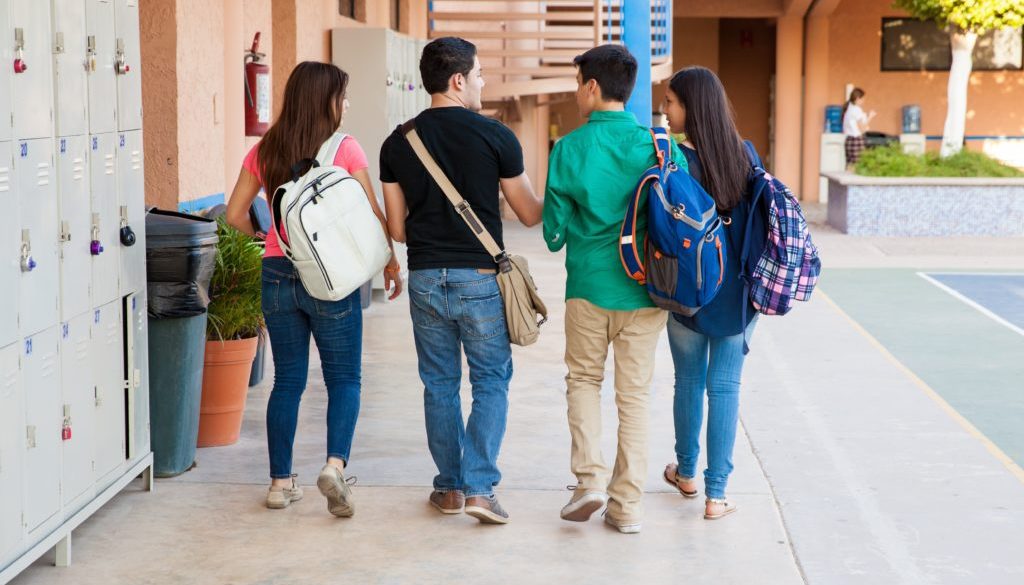Quels sont les exemples typiques de scénarios de crise à l’école ?
How should administrators respond in school crisis situations? Which events qualify as crises? What safety measures and communication tools are most effective in emergency situations? These are just some of the school crisis management questions that administrators, faculty members and security officers deal with on a daily basis.
Unfortunately, compiling a list of typical school crisis scenario examples can be difficult for two reasons. Firstly, two individuals may not share the same definition of “crisis,” and secondly, what may be typical for one area of the country may be atypical for another.
These potential difficulties are addressed by the Department of Education (DOE) in the introduction to its Practical Information for Crisis Planning guide. The guide uses the Merriam-Webster definition of crisis – “an unstable or crucial time or state of affairs in which a decisive change is impending, especially one with the distinct possibility of a highly undesirable outcome” – and applies it to any incident that may directly or indirectly affect any number of people, from a single student to an entire community.
To further widen the range of incidents that could qualify as school crisis scenario examples, the guide applies the definition to incidents that happen before, during, or after school, and on or off school campuses. This broad approach is consistent with several state-level school crisis management guides.
For example, the Virginia Department of Education’s Model School Crisis Management Plan defines “crises” as including, but not limited to, “situations involving the death of a student, staff member, or a member of a student’s immediate family by suicide, substance abuse, illness, or accident.” This document defines “critical incidents” as situations that involve the threat of harm to students, personnel or facilities (e.g., fire, use of weapons, natural disasters and hostage situations).
Furthermore, the crisis does not have to occur locally. To address the “typical” issue, the federal DOE guide states “staff and students may be severely affected by an incident in another city or state” and notes that the events of Columbine and September 11 left the entire nation feeling vulnerable. The American Psychological Association reports that mass shootings contribute to a collective decline in Americans’ mental health.
The expanding scope of school crisis scenario examples
When it was published in 2007, the U.S. Department of Education’s guide listed 11 possible school crisis scenario examples that educational institutions should consider in an emergency preparedness risk assessment. Since the guide’s publication, the scope of school crisis scenarios has expanded significantly. The original school crisis examples include the following:
- Natural disasters (e.g., earthquake, tornado, hurricane, flood)
- Severe weather
- Fires
- Chemical or hazardous material spills
- Bus crashes
- School shootings
- Bomb threats
- Medical emergencies
- Student or staff deaths (suicide, homicide, unintentional or natural)
- Acts of terror or war
- Outbreaks of disease or infections
Vermont’s School Crisis Guide adds more examples of emergency situations:
- Allergic reactions
- Riots and demonstrations
- Explosions
- Hostage situations and kidnapping
- Missing students
- Power and IT outages
- Suicide attempts
- Weapons incidents
- Assaults and/or fighting
This comprehensive guide also includes advice about how schools can prepare against and respond to each example.
Along with these types of school crises, the presence of an unauthorized intruder on school premises could represent a potential threat. Even if there is no physical danger, the emotional distress could disrupt school activities if staff and students feel unsafe.
Possible responses to school crisis scenario examples
It’s essential for school administrators to have a clear response plan detailing how staff members and students should respond to the presence of a potential threat. For example, a comprehensive school crisis management plan must include details on preparing for these situations and also provide instructions on how to secure the school.
The U.S. DOE provides details on common response protocols for school crisis events:
- Lockdown: Often used when the threat is in the building and evacuation is not possible.
- Lockout: Also known as “securing the building” and used to protect students and staff from a threat outside the building.
- Shelter-in-Place: Often used to protect individuals inside the school building from an external threat that requires shelter actions (e.g., a tornado).
- Evacuation: Generally refers to moving from the place where the threat exists to a safe place, either inside the building or at another location.
- Reunification: Required during situations where students and staff members must be relocated outside of school building(s). A two-way communications tool is extremely useful in these situations, as it gives administrators the ability to initiate status and location checks among students and faculty.
During certain events (e.g., active shooter situations), administrators must have a way to securely communicate with 9-1-1 and law enforcement to coordinate response procedures. Additionally, it’s vital to proactively communicate with parents, media personnel and off-campus students to prevent the spread of misinformation and panic.
Even in situations that don’t require 9-1-1 or law enforcement, there must be a reliable mechanism to communicate with faculty, students and parents to inform them of the situation and the ongoing response.
Effective communication is more important than school hardening
School hardening is a controversial subject, with both proponents and opponents basing their arguments on relatively limited data sets. Naturally, schools want to mitigate the risk of an active assailant, but hardening schools against unauthorized intruders appears to be ineffective.
In 2018, the Washington Post conducted an analysis of school shootings over the previous twenty years and found that, although 40 percent of incidents occurred at schools in which a school resource officer (SRO) was present, in only two of the shootings did the presence of an SRO prevent further bloodshed.
The Texas Tribune reports that the state’s school hardening efforts did not prevent the mass shooting that occurred at Robb Elementary School in Uvalde in 2022. Furthermore, a 2021 report from MPR News indicates that the presence of an armed SRO increases the likelihood of injuries and deaths in school shooting incidents.
Conversely, there is evidence to suggest that developing a positive school climate with effective communication can avert school crises. In an article published by educationnext.com, the authors provide three examples of school shootings that were averted by students and parents communicating with school authorities.
Many school administrators are looking to provide more avenues of communication to encourage a “see something, say something” mentality. MetroNews reports that West Virginia’s Board of Education is considering integrating a mobile app designed to allow students, faculty and community members to proactively report suspicious behavior.
Effective communication also plays a vital role in how schools respond to and recover from a crisis. A training manual from the Federal Emergency Management Agency (FEMA) contains an entire section on the importance of communication during an emergency incident. The manual states that “during an incident, information is as critically important to people as food or water.”
Additionally, the National Education Association’s School Crisis Guide (registration required) encourages schools to implement confidential reporting systems and develop crisis communication strategies in order to mitigate the risk of school crises. Without access to secure, reliable communication tools, students, parents and media members may develop their own lines of communication that devalue response and recovery efforts.
What solutions are available to enhance communication and promote school safety?
There are many different tools that can facilitate communication in schools before, during and after a crisis situation. The most effective are those that integrate anonymous tip services, mobile panic buttons and mass notification systems with existing security mechanisms (e.g., CCTV, PA systems and alarms) to create a single, comprehensive high-tech solution at a low cost.
To find out more about integrated communication solutions to prevent, respond and recover from typical school crisis scenario examples, speak with a Rave Mobile Safety School Safety Expert and request a free demonstration of our K-12 solutions.





